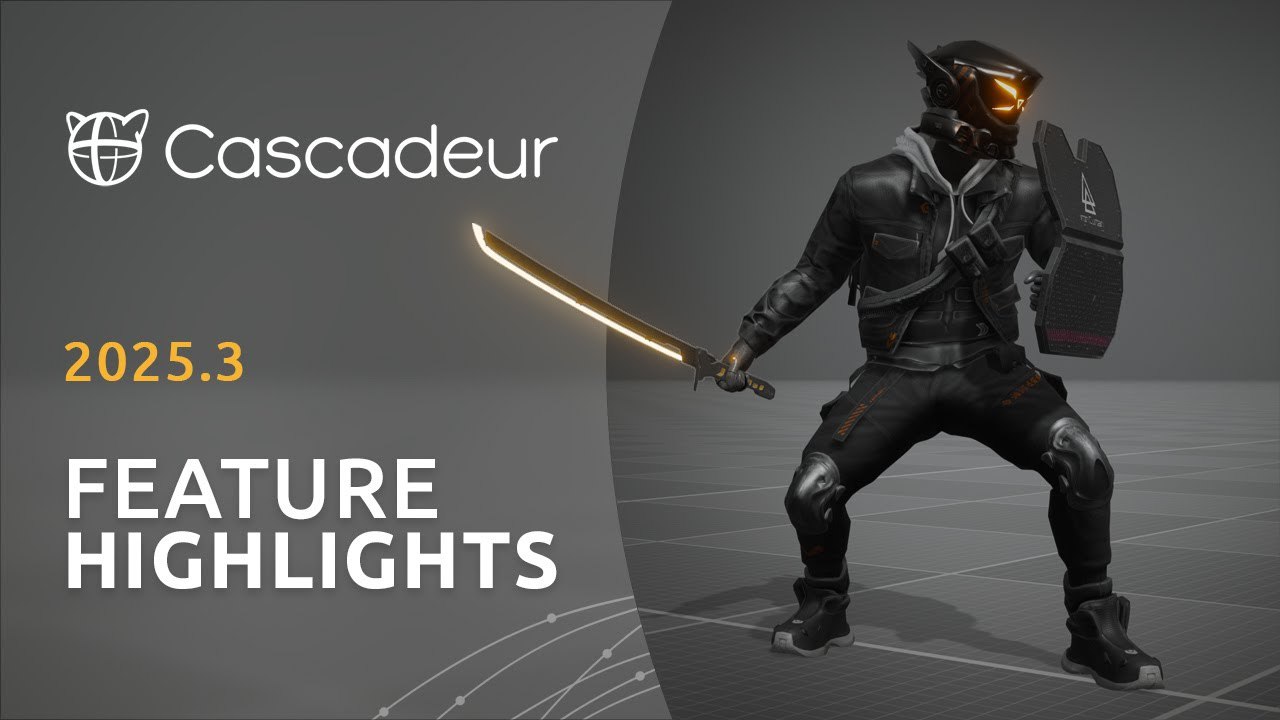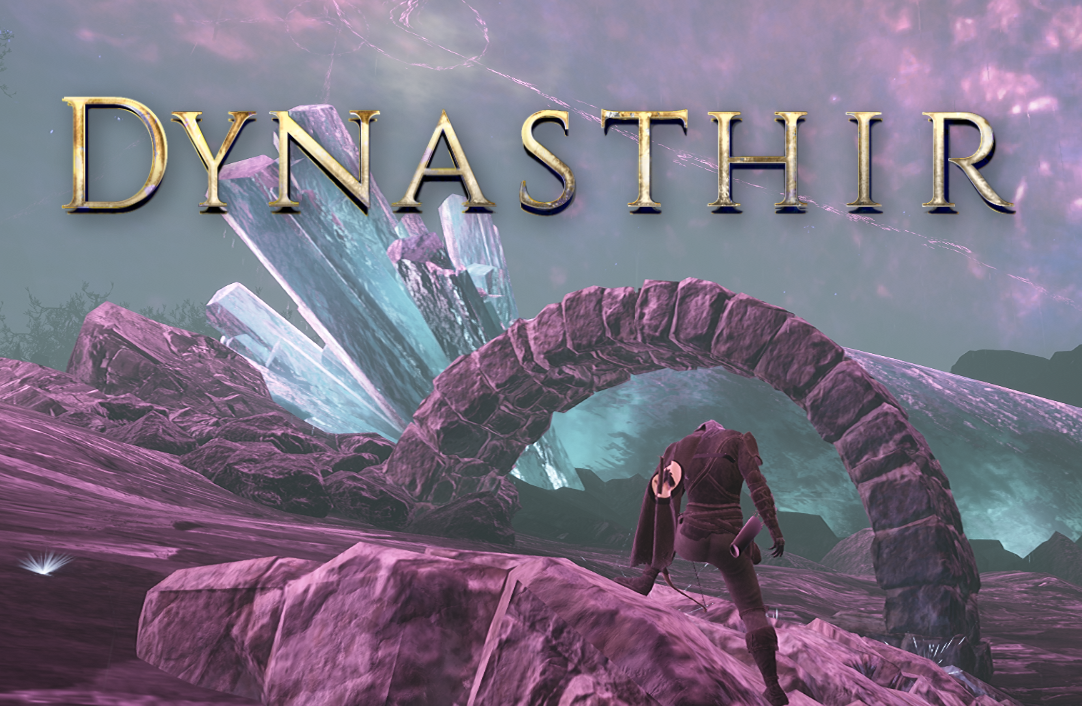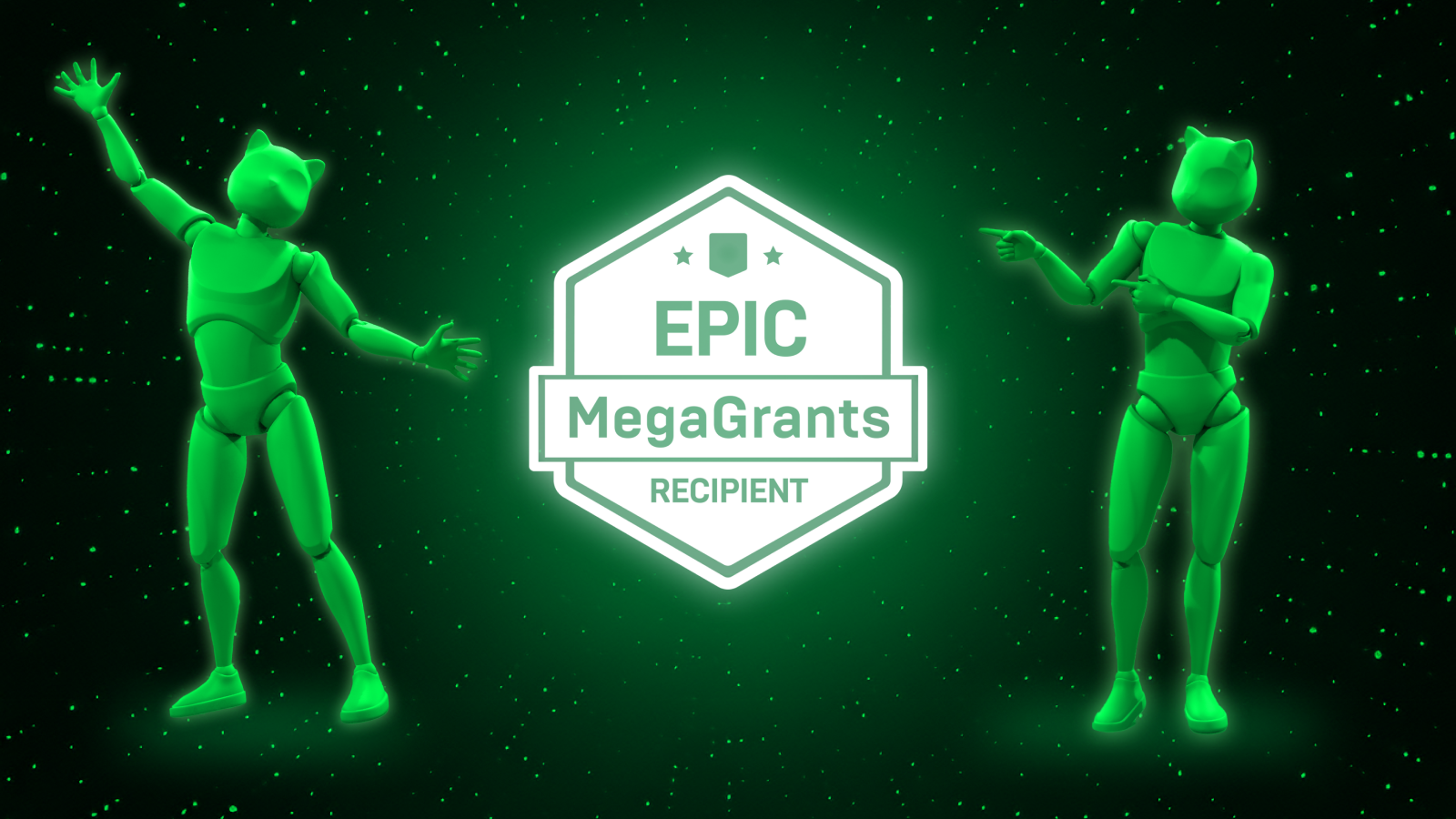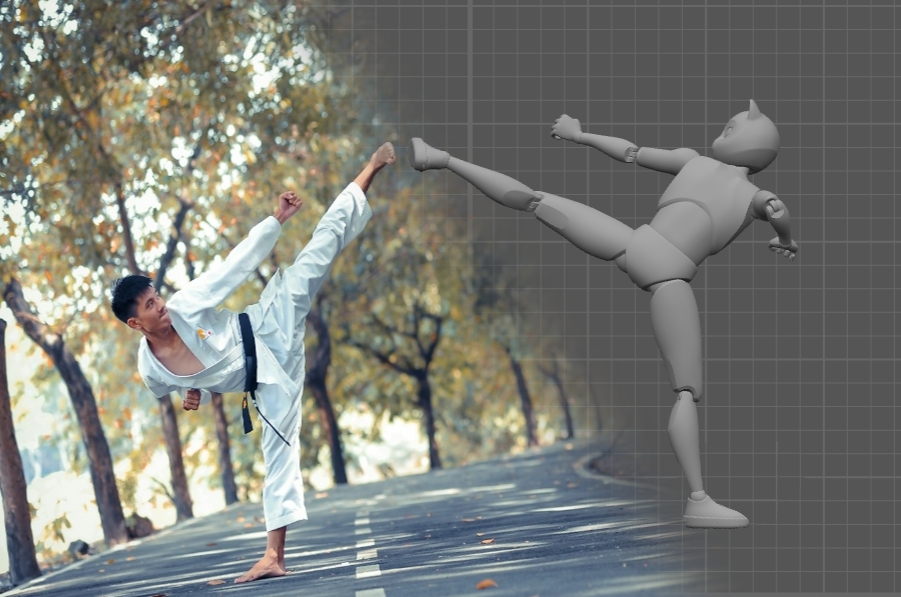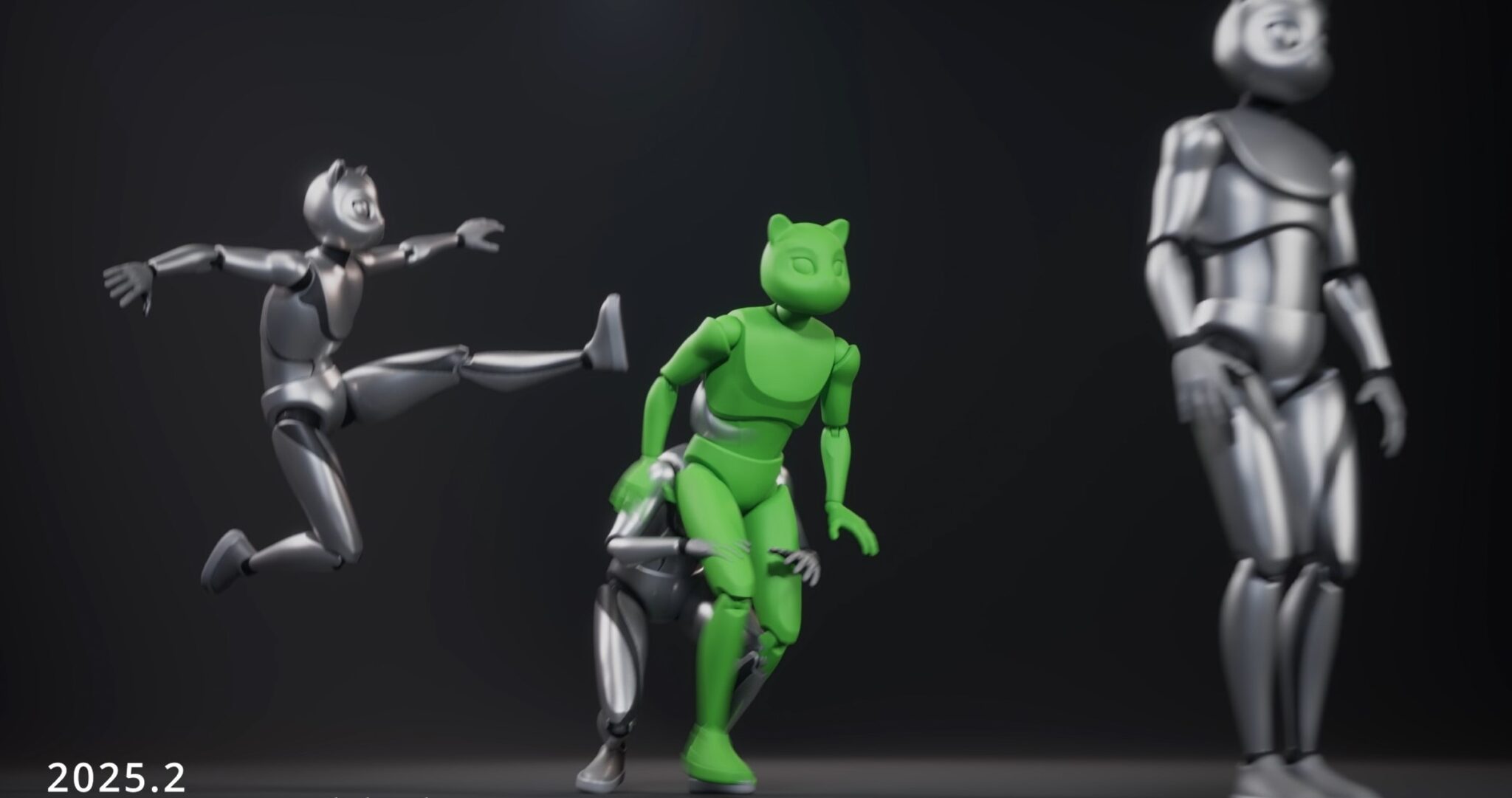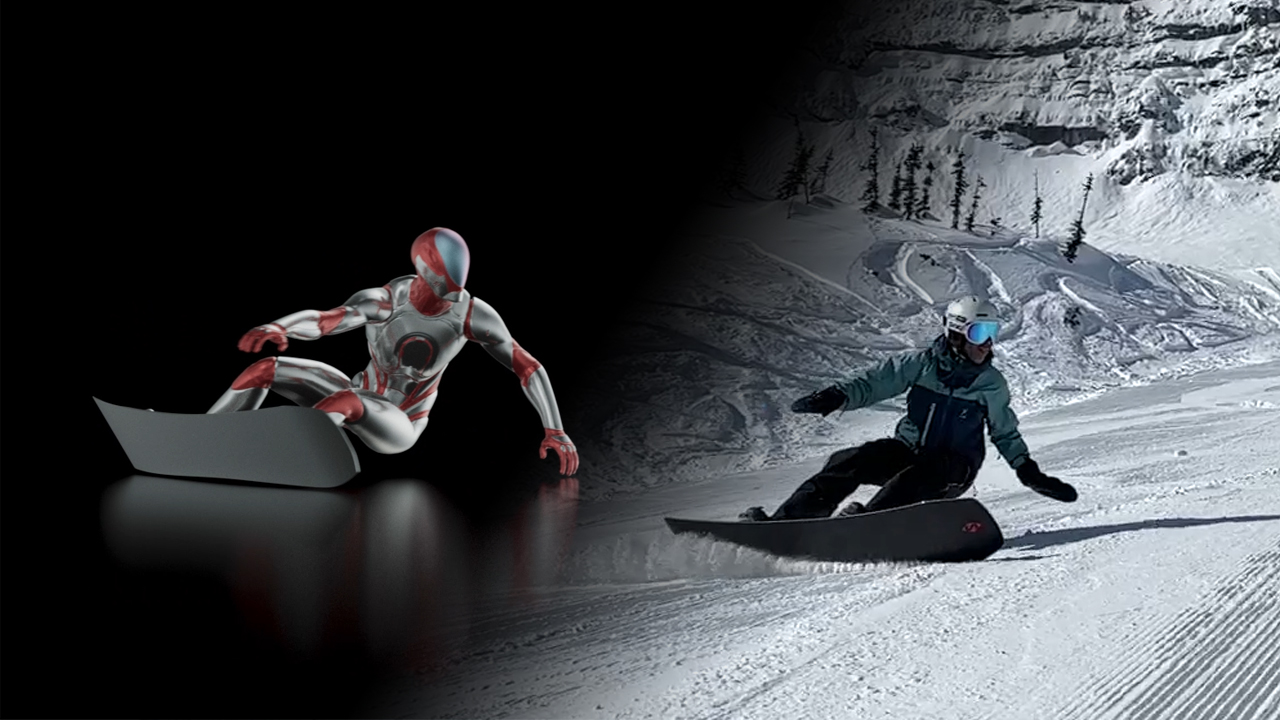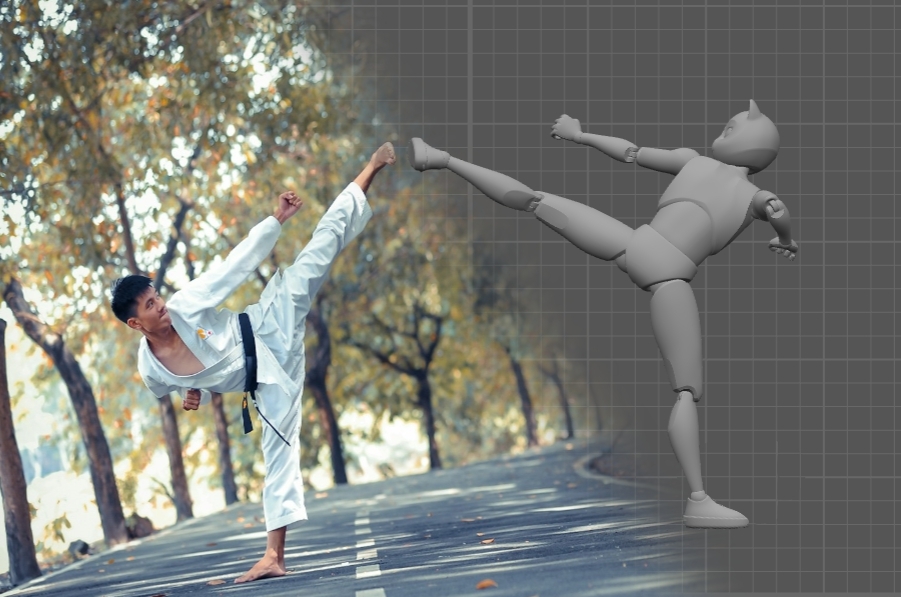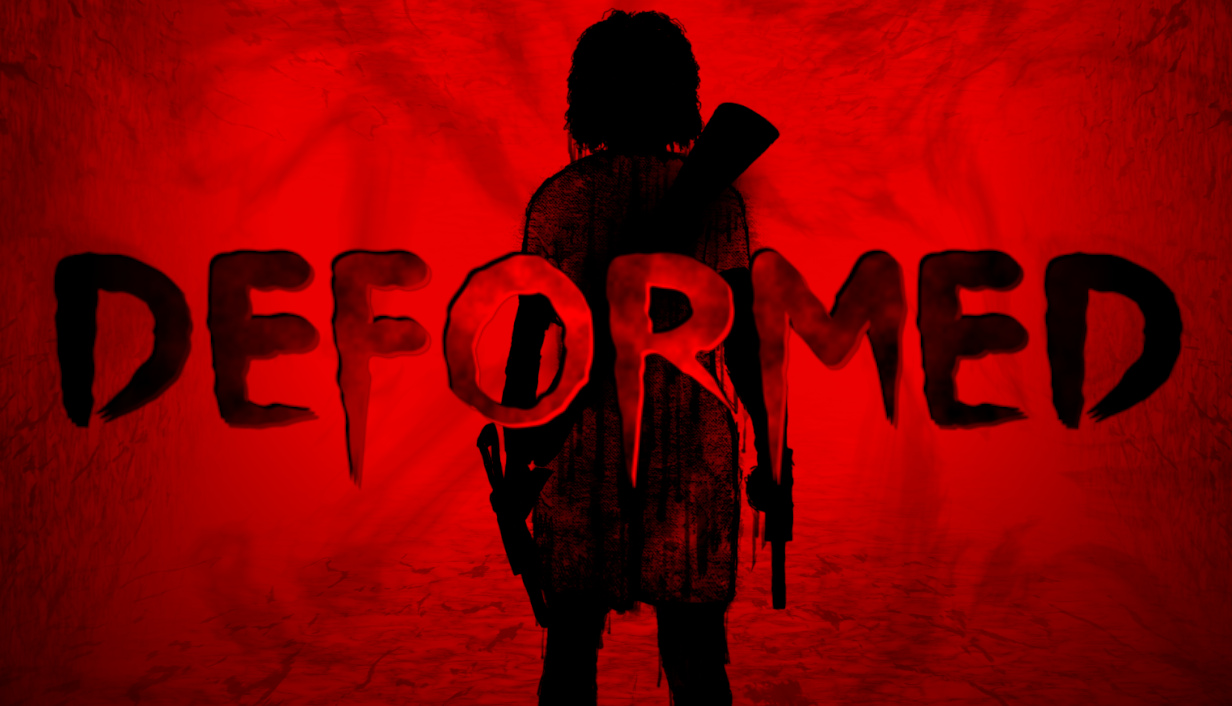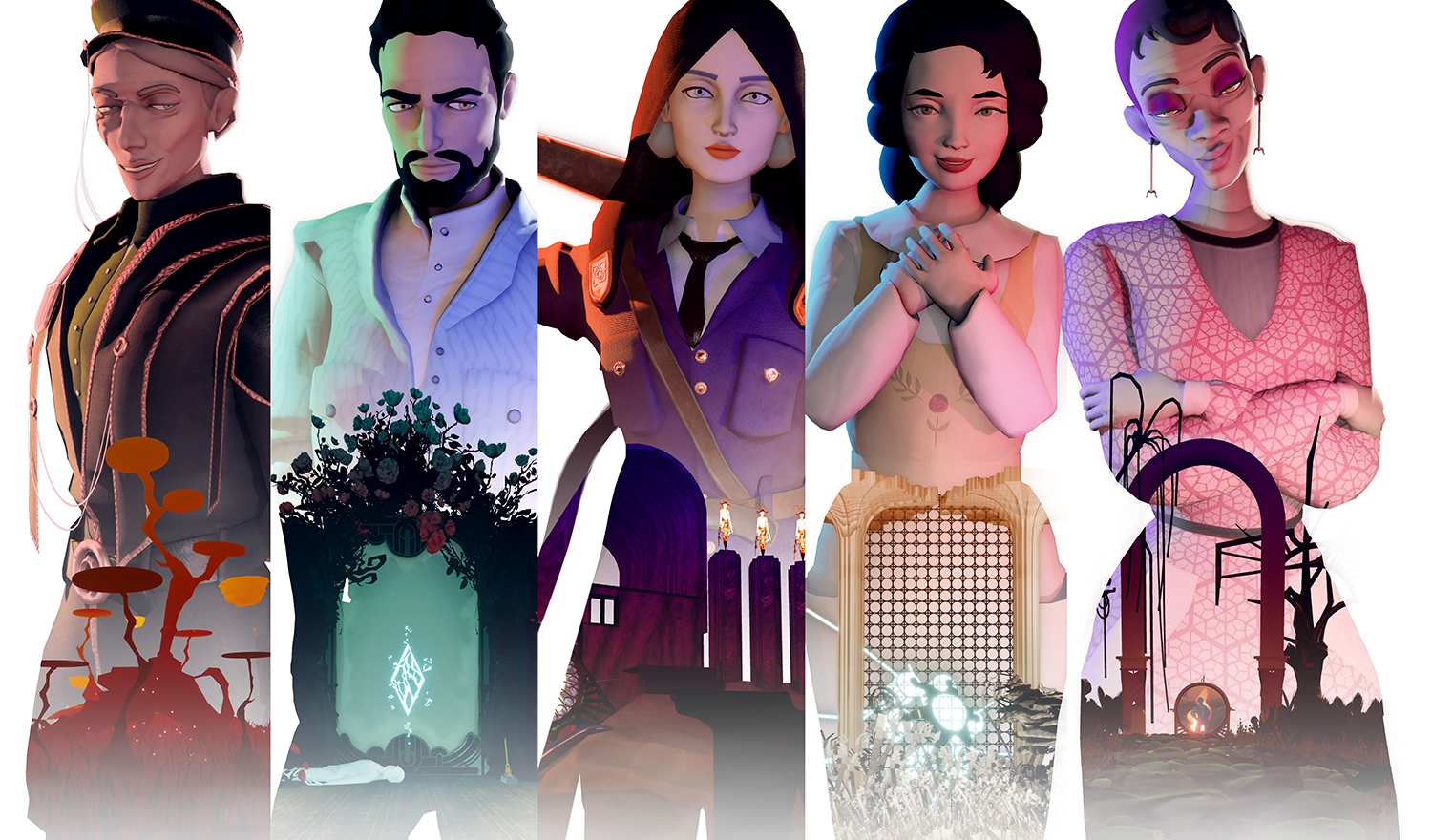
Maybe the title “animators'' is a bit misleading. One of us had briefly animated with Blender and mocap years ago in a student project. The other one had no experience at all. But we're a young indie team of four, so someone had to do the job.
Our plan was to make a small detective game. A walking simulator with a thrilling story and a few hints you have to discover to solve the case. But in a weak and careless moment, our small detective game somehow turned into a 3D action adventure. Now you still need to solve a case but you might use a sword, a hammer or your wing cape before you can even reach your undead witnesses.
Maybe it wasn't particularly smart to start a 3D action adventure with Melee combat as our first project and without the needed expertise, but somehow it worked and that's essentially because of Cascadeur.
Who are we?
We're a young indie team from Trier, a lovely roman town in Germany.We first found ourselves working together in 2016 on various game related student projects. Encouraged by our professors we submitted The Last Premiere to the brand new program of the German government to fund the development of video games (The “Computerspieleförderung des Bundes”). After we had been accepted into the program, we founded the CrystalMesh UG in early 2020.
CrystalMesh that's David the programmer, Yasmin the 3D environment artist, level designer and storyteller, Vanessa the 3D generalist, character designer, storyteller, music composer and animator and me, Linus the 3D generalist, VFX artist, rigger and animator.
With a few breaks while working for clients, we spent the last two years writing the story for The Last Premiere, developing the base of the fight and movement system, building levels and learning how to be a game studio. This is what we have developed.

Ingame screenshot of The Last Premiere
The Story of The Last Premiere
Julie Fader, a young and ambitious detective, gets sent to the once glorious but now abandoned “MIMSI Theatre”.She is supposed to look for an illegal trespasser but gets caught in a case much more intriguing than she could have ever imagined.
20 years ago the premiere of the new and eagerly anticipated play “The Curse of the Sea” was almost over. For the final musical number the crew had built a complex stage set that was connected to several mechanisms below the stage. One of them malfunctioned and large parts of the wooden scenery almost instantly caught fire. The actors were trapped. The official report states that nobody involved in the production made it out alive but some deaths have never been confirmed because the bodies were not found - until now.
Following the trail of evidence deeper into the theatre, Julie gets drawn into an underworld, built by the twisted memories of the victims. Julie's only way out is to fight the demons haunting the dead and solving the mystery surrounding their untimely passing.

Screenshot of a memory sequence. The theater gets inspected by the government.
The Gameplay - Fight and Movement-System
Next to the mystery detective story, The Last Premiere heavily relies on its platformer movement-system and the melee based fight system with three different weapons. A fast paced sword, a slow but brutal hammer and a swift wing-cape with long range projectiles.
Every weapon has a light and a hard attack as well as a special attack. As you progress through six different areas, you slowly unlock the weapons and their attacks.
While the sword and the hammer are simply weapons the wing cape doubles as a glider. Julie gains the ability to double jump and glide for a short amount of time which is a fun way to stay safe in battles or fall down to your demise in the underworld.

Run, Jump, Glide and Dodge!
The animations are a core part of the fight and movement system. For the quick and direct weapon switching and the fast sword fighting we took inspiration from DMC: DevilMayCry. The slow and brutal weapons of Bloodborne on the other hand, were a major reference for our hammer. These two games also had a lot of influence on our movement system, especially for the way the player targets and dodges an enemy.
We also studied the brilliant pacing of Link's sword in The Legend of Zelda: Breath of the Wild and took inspiration from different weapons and animations of Warframe.
In the end we tried to build a fast paced feeling without extreme unnatural movement.
The balance between realism and fast paced frame cutting action is our main nemesis and we're currently on the run to defeat it.
For someone starting with animations I can recommend the two books The Animator's Survival Kit by Richard Williams and Game Anim: Video Game Animation Explained by Jonathan Cooper. Both books really helped us a lot with the animation basics and, especially with the timing of walk, run and jump animations.

Sword, Hammer and Wing Projectiles. Don't look back, just attack!
The Pipeline
The Game currently takes about five hours to finish. But we are still optimizing the level design, the amount and types of enemies as well as the way dialogue is incorporated into the game so as to not interfere with the fun of the gameplay.
The Last Premiere is made with the Unreal Engine 4. It has been the engine of our choice ever since we first started using it for our first student project in 2016. Unreal is very designer friendly and well documented. The visual scripting tools enable the three designers in our team to build and edit complex systems like the movement and fight system by themselves, which is a huge plus for testing and implementing animations. Also Unreal goes hand in hand with Cascadeur and Blender, the 3D modeling software we use.

Screenshot of the five different levels and, at the bottom right, the view inside the memories of the dead.
Why Cascadeur
During my time at the university I was encouraged to do a 3D hand-animated short story in Blender which wasn't that bad for a first time animation, but took forever. I must say that I love Blender. It's a great and powerful program, but animating with Blender as a total newby is neither easy nor fast. Blender does not forgive.
For another student project I was allowed to use our university's small Mocap-Studio. This was fun and exciting and totally overpowered. The time needed to prepare a session, to capture and to clean up the mess of every jiggly body-marker was huge and the result was hard to edit. It might have been due to our limited knowledge at that time, but it wasn't as practical as expected.

The animations of Julie and two enemies (Antique and Friedolin) inside Cascadeur
So at the beginning of our The Last Premiere journey we knew neither Blender nor Mocap was a solution and after a good and long search we found Cascadeur. It was the 2020.2b version, so no autoposing for custom skeletons and no quick rigging tool. Naturally it took us a while to figure out how to get our custom rig to work properly, but after everything was set up we were highly impressed with the workflow Cascadeur offers. It's so clean and simple and everything just makes sense. To be honest, we probably only used about half the tools Cascadeur got, but for us as animation newbies that was all we needed to get started and find a path into the animation rabbithole.
What's Next
We used the past few months to get our story and our levels straight.What we haven't really done yet are cutscenes and facial animations. We tried a short scene to test the workflow and quickly realized that we want to animate blendshapes and body animations at the same time because it's easier for us to see how a scene develops since we are still not at the level of professional animators. So that's the one thing we're really looking forward to: blendshapes in Cascadeur. Since that's already announced for further releases we will wait patiently and focus on the overall fight feedback. Also we would like to improve the existing animations a bit. Since the latest iteration there have been a lot of changes in cascadeur and in the way we animate.

A test scene to combine body animations and facial expressions via blendshapes.
What about The Last Premiere
If you really have been reading until here, you might be interested to know more about our future plans for The Last Premiere. There are still a few things we like to add and improve. We also visited Gamescom this year and gathered a lot of useful feedback from gamers and other developers we'd like to include. There's still a lot of work and since we're a small indie team this might take awhile.
In the meantime we are also developing a concept for a small platformer named MOTE - Mind Of the Eyes. We recently got funded for the first steps into this project and we're thrilled to have another project on the way while finalizing The Last Premiere.
If you like us to keep you updated, you can follow us on Twitter , check out our Homepage and of course add The Last Premiere to your Steam Wishlist . Every single Wishlist entry helps us a lot and reminds us to keep on fighting to make this Game the best possible version with the best possible animations it could be.
Thank you for reading all of this and thank you Cascadeur for this opportunity. You're an awesome piece of program and we're excited to see where the journey leads.

